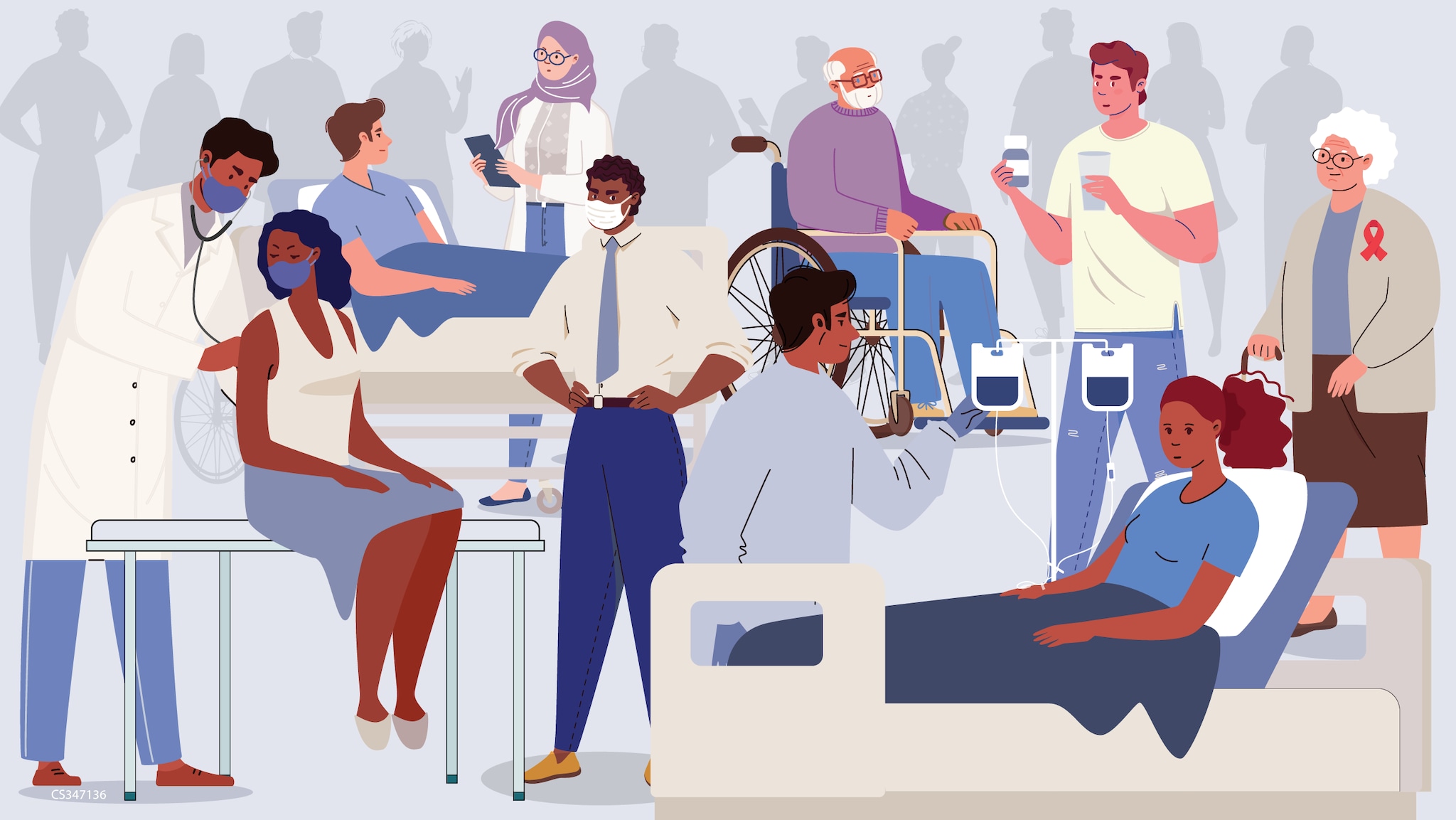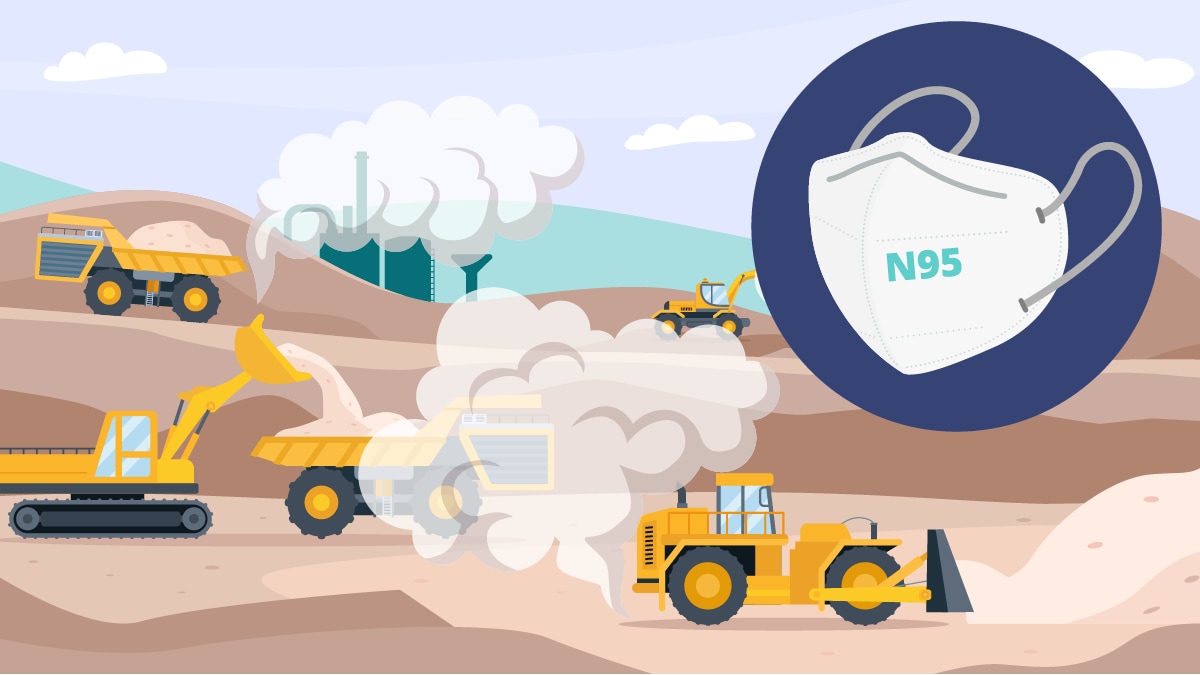Key points
- About half of the people who breath in fungal spores from Blastomyces become sick with blastomycosis.
- Risk of infection is higher among certain ethnic groups and among people who do more outdoor activities.
- People who are pregnant and people with weakened immune systems are at highest risk of severe illness.

Who's at risk
Racial and ethnic groups
People from certain racial and ethnic groups may have higher rates of Blastomyces infection or hospitalization. These differences might be related to social determinants of health.
Severe illness
Some conditions increase the risk for developing severe blastomycosis. This includes people who have weakened immune systems, for example, people who:
- Have advanced HIV/AIDS.
- Have had an organ transplant.
- Are taking medications such as corticosteroids or TNF-inhibitors.
- Are pregnant.
Activities that can increase risk
Blastomycosis is caused by breathing in fungal spores from Blastomyces living in soil and decomposed wood. In areas where Blastomyces live, some outdoor activities can stir more spores into the air and increase risk for infection.
These activities may include forestry work, hunting, fishing, and camping as well as digging and excavation. High winds can also increase risk.
Pets and blastomycosis
Pets, particularly dogs, can get blastomycosis. Although it is extremely rare, it is possible for people to get infected by animals. Blastomycosis can spread from animals to people through bites. Veterinarians can also become infected from injuries caused by needlesticks contaminated from use on an infected animal.
The symptoms of blastomycosis in animals are similar to the symptoms in humans. People who think their pet has blastomycosis, should talk to a veterinarian.
Occupational risks

Construction and excavation sites
Construction and excavations sites, and other settings that disturb soil and plant matter, may increase the likelihood of breathing in spores.
Laboratories
Blastomyces can be transmitted through breathing in conidia (spores) from fungal cultures. There is no evidence showing that antifungal medication (i.e., prophylaxis) prevents people from getting sick with blastomycosis after exposure to Blastomyces.
Steps to take for workplace exposures
Workers who think they were exposed to Blastomyces at work should contact their supervisor right away. If symptoms develop or they feel they are at risk, workers should contact a healthcare provider.
Workers or supervisors should also report to the Occupational Health, Infection Control, Risk Management Department. In workplaces without these services, they should contact their local city, county, or state health department.
Reducing risk
In areas where Blastomyces is common in the air, it may not be possible to avoid exposure. People who have weakened immune systems should consider avoiding activities that involve disrupting soil.
Some ways to help reduce risk include:
- Stay inside in windy, dusty conditions.
- Avoid activities that stir up or increase contact with dirt.
- Examples include yardwork, digging
- Examples include yardwork, digging
- Wear long sleeve and pants when spending time in the woods.
Most people who breathe in spores do not get sick. Sometimes healthcare providers prescribe antifungal medications to people at high risk to prevent infections. There is no vaccine for blastomycosis.
- Pappas PG, Threlkeld MG, Bedsole GD, Cleveland KO, Gelfand MS, Dismukes WE. Blastomycosis in immunocompromised patients. Medicine. 1993;72(5):311–25.
- Smith DJ, Williams SL, Endemic Mycoses State Partners Group, Benedict KM, Jackson BR, Toda M. Surveillance for Coccidioidomycosis, Histoplasmosis, and Blastomycosis — United States, 2019. MMWR Surveill Summ 2022;71(No. SS-7):1–14.
- Benedict K, Gibbons-Burgener S, Kocharian A, Ireland M, Rothfeldt L, Christophe N, Signs K, Jackson BR. Blastomycosis Surveillance in 5 States, United States, 1987-2018. Emerg Infect Dis. 2021 Apr;27(4):999–1006.
- Saccente M, Woods GL. Clinical and laboratory update on blastomycosis. Clin Microbiol Rev. 2010 Apr;23(2):367-81.
- Brömel C, Sykes JE. Epidemiology, diagnosis, and treatment of blastomycosis in dogs and cats. Clin Tech Small Anim Pract. 2005 Nov;20(4):233-9.
- Stevens DA, Clemons KV, Levine HB, Pappagianis D, Baron EJ, Hamilton JR, et al. Expert opinion: what to do when there is coccidioides exposure in a laboratory. Clin Infect Dis 2009 Sep;49(6):919–923
- Denton JF, Di Salvo AF, Hirsch ML. Laboratory-Acquired North American Blastomycosis. Laboratory-acquired North American blastomycosis. JAMA. 1967;199(12):935–936.
- Gnann JW, Bressler GS, Bodet CA, Avent CK. Human blastomycosis after a dog bite. Ann Intern Med. 1983 Jan;98(1):48-49.
- Ghatage P, Pierce KK, Wojewoda C, Mendelson N, Wilcock J, Nesbit R, et al. A veterinarian from Vermont presenting with a painful right index finger following a needlestick injury that occurred while caring for a dog. Clin Infect Dis. 2020 Sep;71(6):1577–1579.
